
If you have a passive speaker setup for your surround sound home theater system, then you require an amplifier. But there is also something called a receiver, and in the audio industry, these terms are sometimes used interchangeably despite their differences.
To answer the questions of which is better and which of the two do you really need, here is our experts’ receiver vs amplifier comparison and guide.
What is a Receiver?
A receiver is considered an integral part of a home theater setup. It is capable of receiving signals, hence the name. To clearly see what this device can offer, our team weighs in on the benefits and drawbacks of a receiver.
Pros and Cons of a Receiver
An advantage of a receiver is it acts like a more advanced amplifier, in a sense. Oftentimes, it contains an integrated amplifier or pre-amp built in. There is a radio section built into the device.
Receivers like the Yamaha RX-V685 are considered an all-in-one system, so if you have the choice of opting for an amp or a receiver and you aren’t sure which to go for, our team suggests the receiver.
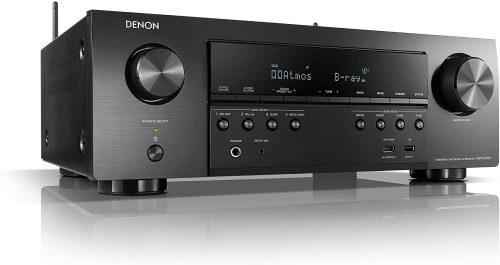
As a crucial part of your home theater, a receiver will have all the inputs you need to get set up for both video and music. Since it is an all-in-one device, it’s also a space-saving option for people who don’t have much room to spare. This is because all the components are condensed into one system rather than being separate parts.
Amazingly, the price of a receiver will also be cheaper than if you opted for separate components.
With all that said, what are the cons of a receiver? Sure, it’s much more convenient, but since it’s an amalgam of different components, the quality is sometimes lower than an amplifier.
None of the components are dedicated to one function, and since it’s space-saving, a receiver may not be the best for better sound for powerful speakers.
Similar to active soundbars and speakers, the all-in-one system design of the receiver makes it hard to upgrade just one part. When the time comes to improve your audio equipment, you will need to switch out the entire device.
Stereo Receivers
Receivers can be divided into two main categories, one of which is stereo receivers. These devices are pretty much solely for sound purposes without video involved. Basically, stereo receivers are for users who have a home system setup just for music.
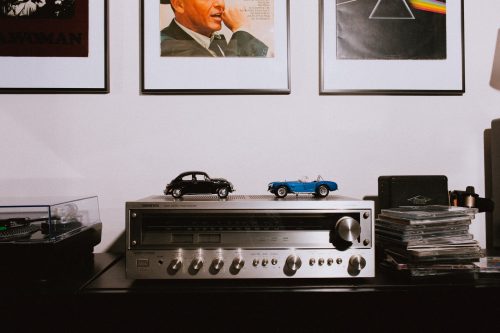
A/V Receivers
The next category is the A/V receiver. The A/V receiver[1] already explains what this type of receiver is for. AV, which stands for audio and video, is used to enhance the sound quality of both audio and video content. This is the type of receiver you want to get if you want surround sound for your home theater sound system. You can connect your wireless speakers to a receiver for better sound quality.
Audio Video receivers come with all the inputs you require to support both audio signal and video signal. You should definitely consider receivers with AV functions for an easy setup.
What is an Amplifier?
Now we know a little about what a receiver is, so our experts will go into detail about the amplifier to help you get the optimal device for your audio video needs.
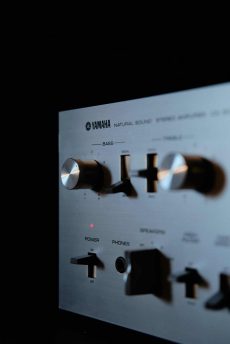
Pros and Cons of an Amplifier
An amplifier is the opposite of a receiver, in the sense that it has just one function—to amplify your sound. An amplifier will amplify line level signals and boost them through your selected component. If you do not have a receiver, then you will need a power amplifier or amp for short.
The amp is a good choice for audiophiles who like to customize and pair their own systems. Because it’s a separate component and not part of an all-in-one, upgrading your system is also easier. It makes sense to look into an amplifier if you already have preamps and a radio tuner in your speakers as well.
However, with more flexibility also comes a higher cost. Purchasing separate parts could cost you more to get the best acoustics. Also, because there are more parts and they aren’t consolidated into one device, they do take up more space.
Preamp
Our experts mentioned a pre-amp above, but what exactly is that? A pre-amp is what it sounds like, something that comes before the amplifiers. The pre-amp takes the weaker audio signal and boosts it by a bit first, before sending it to the amplifiers.
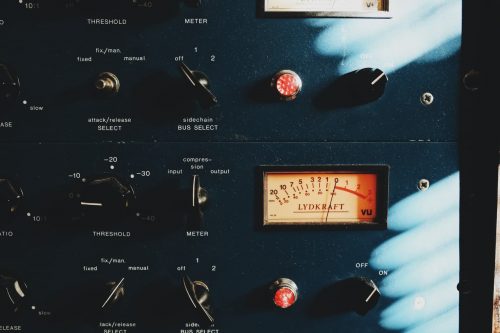
They need to boost the amount of power from the weaker signals to match all the other ones from other sources before the amplifiers kick in. Preamps are usually a part of the receiver and they don’t cost much money.
Other than boosting the signal strength, a preamp also possesses the ability to enhance the quality of the sonic signal to elevate your music and digital content to the level you want.
Standalone Amplifier
Amplifiers can be standalone or be an integrated option, which means they come with the preamp, tuner, etc. A standalone amplifier just boosts audio signals to the speakers without the help of a preamp. They are also referred to as power amps and don’t possess the preamp to help refine the audio speakers.
When to Use a Receiver or an Amplifier
Now that you know the differences between receivers vs amplifiers, which one should you choose?
If you don’t plan on upgrading your speakers, and if you don’t have particularly large speakers with a large amount of power, then a receiver is the one to choose. An A/V receiver is our experts’ recommended choice of receivers because they possess audio and video inputs, which help with video switching.
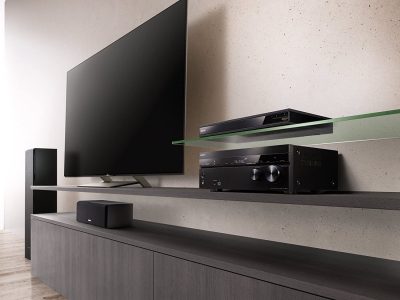
These receivers can support different input selection options and volume control and can be high end if you know where to look. Since they are an all-in-one system, they are also the most convenient to hook up to your left and right speakers.
Pre-amps are also built into the receivers so that may also help boost the audio quality of your speaker channels.
However, if you care about the quality of the equipment and want a more hands-on approach when connecting your system, then amplifiers are the right choice for you. Not only are they the right choice, they can transform any room into a cozy listening space. Amplifiers are easy to use and have much more customizability compared to receivers.
FAQ
Which is better amplifier or receiver?
The amplifier is better if you want customization. However, if you are someone who wants less hassle and more convenience, then a receiver will make more sense. Amplifiers offer users the opportunity to pick and choose the different components, but they also take up more space. A receiver has everything you need built-in and can have both audio input and video input selection to make it more versatile.
Can I use a receiver as an amplifier?
Yes, you can use a receiver as an amplifier because the receiver most likely has an amplifier built-in. Receivers are all-in-one options that have all the components included, like the preamp and amplifier. However, this also gives users less customizability so you should not buy a receiver if you want to build your own system.
Is preamp better than receiver?
No, a preamp is not better than a receiver. In fact, a preamp is often a part of a receiver that will boost weaker signals before sending it to be amplified by the amplifiers. They can improve the acoustic standard of some signals to make it uniform to all other ones for a more balanced sonic experience.
Why do I need an amplifier?
You need an amplifier if you like clear, balanced audio. The power supply and signals to your speakers will be boosted by the amplifier to the level you want. Without an amplifier, your system won’t be complete and the sound won’t be as powerful.
Do I need an amplifier if I have a preamp?
Yes, you need an amplifier if you have a preamp. They perform similar functions of amplifying sound, but the preamp will ready the signal to be sent to the amplifiers by boosting them to the same level as all the other ones so your amplifiers can have a balanced output.
Conclusion
The conclusion for an amplifier vs receiver is not concrete. It depends on your personal needs, but if you like convenience and an easy setup, choose a receiver. Receivers also save on space and you won’t have to worry about compatibility.
However, for the best sound guarantee, our team suggests opting for an amplifier because it gives you more freedom to upgrade your speakers as time goes on.
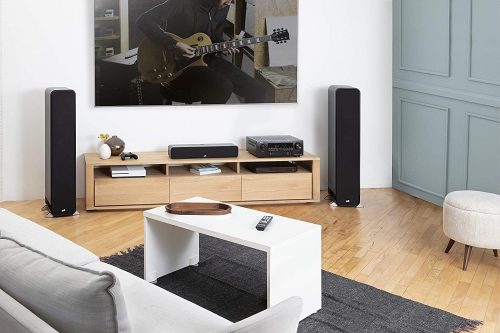
The post Receiver vs Amplifier — Which Is More Suitable for Your Audio System? appeared first on The Product Analyst.
from The Product Analyst https://theproductanalyst.com/receiver-vs-amplifier/
No comments:
Post a Comment